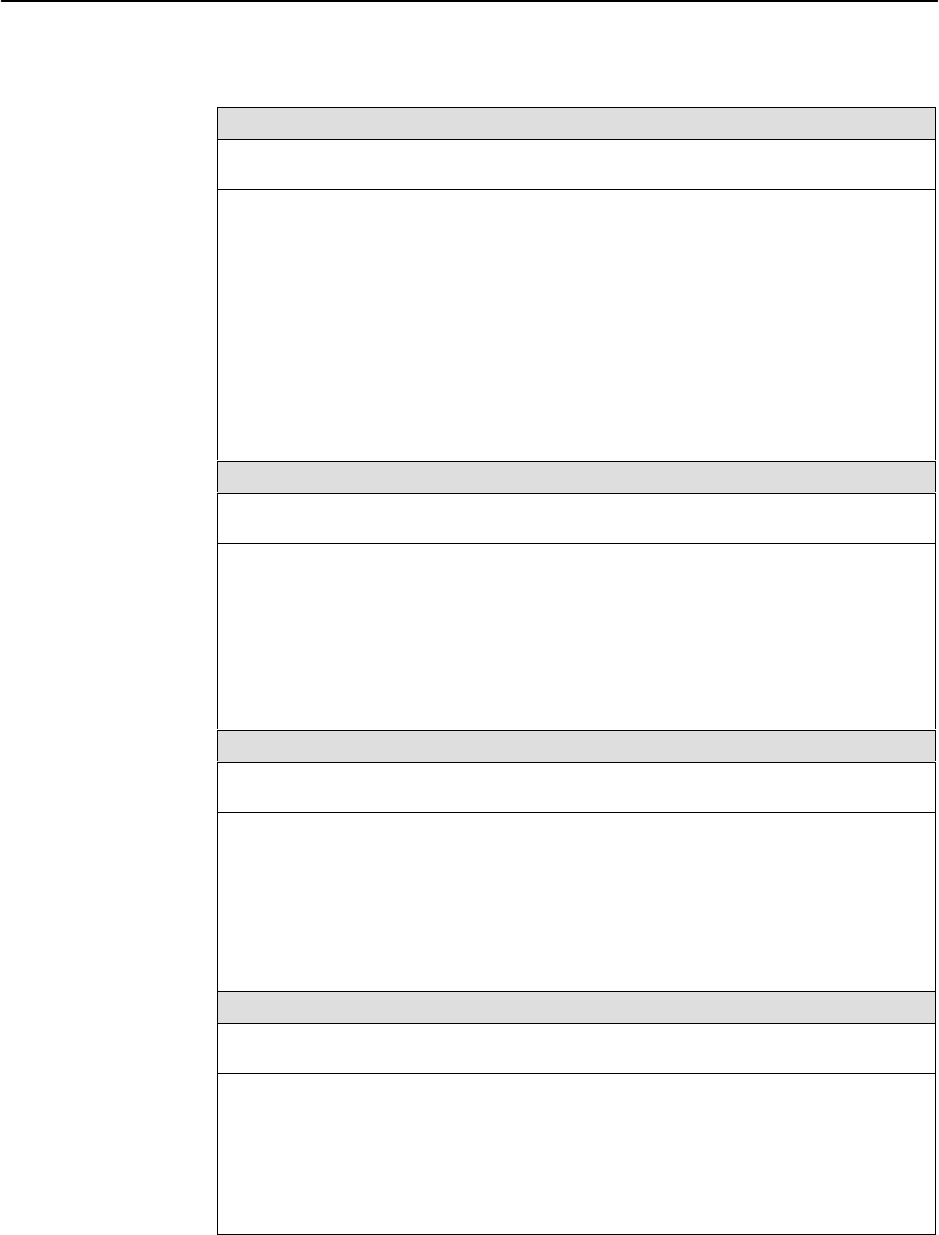User's Manual
Table Of Contents
- Contents
- About This Guide
- About the FrameSaver DSL Unit
- User Interface and Basic Operation
- Configuration Procedures
- Configuration Options
- Overview
- Using the Easy Install Feature
- Setting Up So the Router Can Receive RIP
- Entering System Information and Setting the System Clock
- Configuration Option Tables
- Configuring the Overall System
- Configuring the Physical Interfaces
- Configuring Frame Relay for the Data Port
- Configuring ATM for the Network Interface
- Configuring Circuit and DLCI Records
- Configuring PVC Connections
- Setting Up Management and Communication Options
- Configuring Node IP Information
- Configuring Management PVCs
- Configuring General SNMP Management
- Configuring Telnet and/or FTP Session Support
- Configuring SNMP NMS Security
- Configuring SNMP Traps
- Configuring the Ethernet Port
- Configuring the Communication Port
- Configuring the COM Port to Support an External Modem
- Security and Logins
- Operation and Maintenance
- FTP Operation
- Troubleshooting
- Setting Up OpenLane for FrameSaver Devices
- Setting Up Network Health for FrameSaver Devices
- Menu Hierarchy
- SNMP MIBs and Traps, and RMON Alarm Defaults
- Connectors, Cables, and Pin Assignments
- Technical Specifications
- Equipment List
- Index

Configuration Options
4-39
9783-A2-GB20-00
July 2000
Table 4-16. SNMP Traps Options (3 of 3)
Link Traps
Possible Settings: Disable, Up, Down, Both
Default Setting: Both
Determines whether SNMP linkDown or linkUp traps are sent to the currently configured
trap manager(s). A linkDown trap indicates that the unit recognizes a failure in one of
the interfaces. A linkUp trap indicates that the unit recognizes that one of its interfaces
is active.
Use the Link Traps Interface and the DLCI Traps on Interface configuration options to
specify which interface will monitor linkUp and linkDown traps messages.
Disable – Does not send linkDown or linkUp trap messages.
Up – Sends trap messages for linkUp events only.
Down – Sends trap messages for linkDown events only.
Both – Sends trap messages for linkUp and linkDown events.
Link Traps Interfaces
Possible Settings: Network, Ports, All
Default Setting: All
Specifies which interfaces will generate linkUp, linkDown, and enterpriseSpecific trap
messages. These traps are not supported on the COM port.
Network – Generates these trap messages on the network interface only.
Ports – Generates these trap messages for linkUp, linkDown, and enterpriseSpecific
events on the user data port only.
All – Generates these trap messages for linkUp and enterpriseSpecific events on all
interfaces, except for the COM port, that are applicable to the FrameSaver model.
DLCI Traps on Interfaces
Possible Settings: Network, Ports, All, None
Default Setting: All
Specifies which interfaces will generate linkUp and linkDown trap messages for
individual DLCIs. These traps are only supported on the frame relay interfaces.
Network – Generates these trap messages on DLCIs for the network interface only.
Ports – Generates these trap messages for DLCIs on a user data port only.
All – Generates these trap messages on all frame relay interfaces.
None – No DLCI trap messages are generated.
RMON Traps
Possible Settings: Enable, Disable
Default Setting: Enable
Specifies whether remote monitoring traps are sent to the currently configured trap
manager(s). RMON traps are typically sent as a result of the Alarms and Events Groups
of RMON1 when a selected variable’s configured threshold is exceeded.
Display Conditions
– This option only appears for units with the SLV feature set.
Enable – Sends RMON trap messages when set thresholds are exceeded.
Disable – Does not send RMON trap messages.










